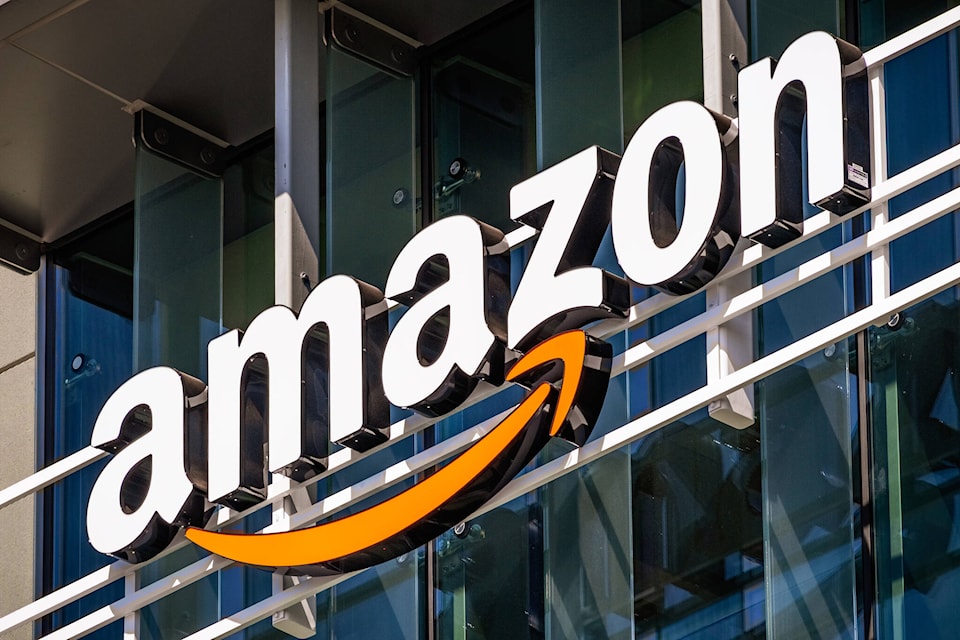Haven’t ordered any of yet?
Well, you might find solace in discovering some of are working to increase their shipping speeds to please shoppers expecting faster and faster deliveries.
Walmart, Target and Amazon are all-in on the shipping wars, a move retail experts say will help them maintain a competitive edge against low-cost . For Walmart and Target, their investments are also aimed at narrowing the gap in delivery speed with Amazon, which has set the standard for fast shipping and remains the king of speed.
have been arriving at the doors of Prime customers even faster this year under the company’s new distribution model, which divides the country into eight regions and predominantly ships items from warehouses in those areas. The idea, according to Amazon, is to get shipments to travel shorter distances with fewer touchpoints, which helps the company not only speed up deliveries but also cuts down on costs.
Previously, the Seattle-based e-commerce giant used to fulfill orders from warehouses across the country. In July, it said 76% of customer orders were being fulfilled within their region, up from 62% before the change.
“We remain on pace to deliver the fastest delivery speeds for Prime customers in our 29-year history,” Amazon CEO Andy Jassy said in October during an earnings call with analysts.
Company executives have noted faster shipping is also being driven by Amazon’s expansion of same-day delivery, which was first rolled out in 2015 to Prime members who currently pay $139 a year for free two-day shipping and other perks. Same-day delivery sites are smaller warehouses that are located in metro areas and predominantly store the top 100,000 products customers want. Amazon Vice President of Delivery Experience Sarah Mathew said the company currently has 55 of these sites in the country. And it has plans to double the number in the coming years.
“Psychologically, fast delivery is very important to the consumer when ordering online,” said Neil Saunders, managing director of GlobalData Retail. “That is why everyone is trying to push out more into this space even though it’s very expensive to support and it often requires a lot of new infrastructure.”
To catch up, Walmart and Target have been pouring money into warehouse upgrades, new facilities or other efforts that they say will also help trim costs.
Walmart uses more than 4,000 of its stores across the country as fulfillment centers and delivery hubs for online orders. In November, the company said it would be adding 40 so-called parcel stations to stores in nine states by the end of the year in an effort to process more goods and get them faster to customers. The nation’s largest retailer said many of the stations — which are like mini post-offices that receive and deliver packages — would be operating during the holiday season.
At the same time, the is working to overhaul its warehouses through automation to help speed up delivery to stores and customers.
Walmart is doing this in various ways: It’s automating all 42 of its regional distribution centers, which hold non-perishable items and ship goods to replenish stores. Furthermore, it’s building four automated warehouses that handle perishable items. And it’s planning to add more than 100 smaller facilities that are connected to its stores and handle online orders.
Since last year, Walmart has also opened its first three fully automated “next generation” fulfillment centers, which hold a deeper assortment of the most wanted items and cut down the number of steps it takes to pack and ship orders from 12 to five. The company has said these hubs, as well as changes to its transportation network, have made it able to “drastically increase” the number of orders it’s able to ship the next day. The goal, Walmart says, is to double the number of customer orders fulfilled daily and expand next- and two-day shipping to nearly 90% of the US.
is aiming to increase its shipping speed by augmenting its own warehouses, called sortation centers, with a $100 million investment announced earlier this year.
Sortation centers receive packages for online orders from 30 to 40 surrounding Target stores that are sorted, batched and routed for delivery to local neighborhoods by a third-party carrier or Shipt, which Target owns. The warehouses are expected to double their delivery volume to more than 50 million packages this year, with a growing number of items delivered to customers the next day. The company - which currently has 10 around the country and plans a modest increase to at least 15 by early 2026 — said it expects to deliver 9 million packages from sortation centers during the holiday season.
“These facilities have transformed how we move inventory with speed and precision to guests’ doorsteps,” Target’s executive vice president and chief operations officer John Mulligan told analysts earlier this year.
Though both Walmart and Target use their physical footprint to help fulfill online orders, Jason Goldberg, the chief commerce strategy officer at the advertising giant Publicis, noted that Amazon has far more warehouse space and trucks than Walmart and Target. He said even if both Target and Walmart were to dramatically add more delivery hubs, they still wouldn’t be able to catch up with Amazon.
“It’s almost hard to imagine you could ever catch up with Amazon’s model,” Goldberg added.
Haleluya Hadero And Anne D’innocenzio, The Associated Press


